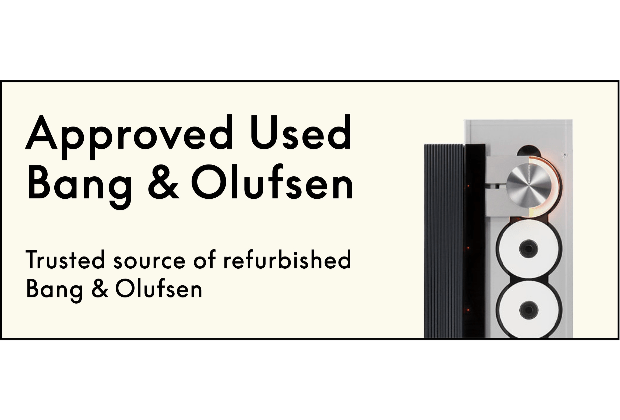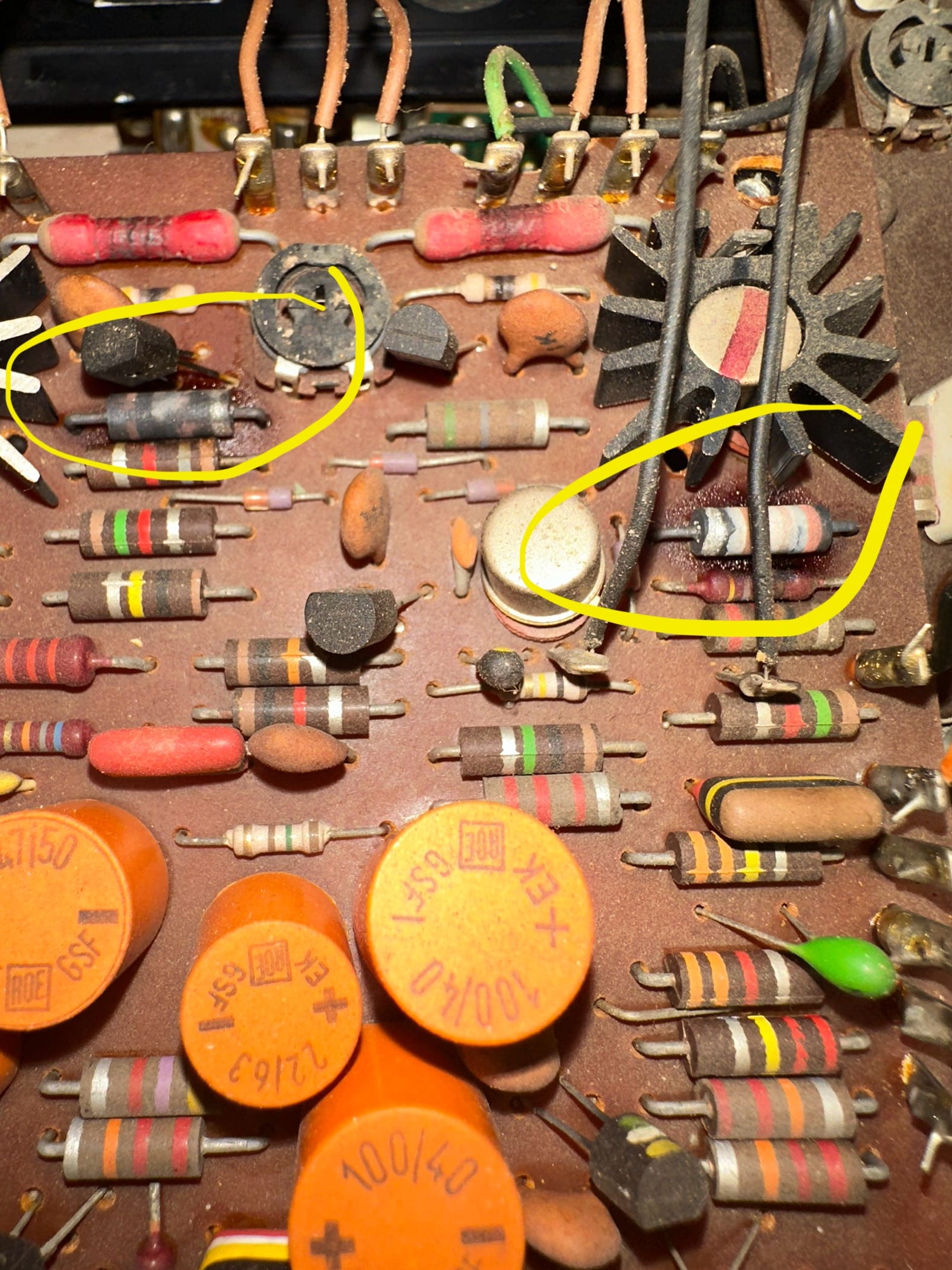Home › Forums › Product Discussion & Questions › BeoMaster › Beomaster 3000-2 – smoky resistors!
Tagged: OULD Beomaster 3000-2
- This topic has 7 replies, 4 voices, and was last updated 2 weeks, 4 days ago by
Dillen.
-
AuthorPosts
-
6 May 2025 at 23:35 #65475
Rickie McNeill
BRONZE MemberHi – I had a Beomaster 3000-2 that worked for several years. Then one day PCB started smoking and it clapped out. A few years ago I looked on the old version of this forum and got advice to replace the main 3 big caps and (I think) the rectifier that’s by the transformer. I think I got it working again for a while and then it smoked out again. I shelved it at that stage. Fast forward to now and I fancied another go at it. I replaced the T1AL fuses and fired it up and got power but then the dreaded smoke and some very hot/burny resistors on the 8002059 board. Looking for any advice on where to get started if I was the finally fix this thing. The toasted resistors are circled below – presumably these will need replaced?
Replaced parts (previously):
6800 uf , 100v Cap
two 4700uf, 63v caps
One VISHAY GENERAL SEMICONDUCTOR, GSIB2520-E3/45, BRIDGE RECTIFIER, 25A, 200V
7 May 2025 at 09:50 #65477hcraig244
BRONZE MemberHi
Is this a Beomaster 3000…..if so at first glance it looks like a possible power transistor short could be responsible
7 May 2025 at 10:00 #65479Rickie McNeill
BRONZE MemberHi it’s a 3000-2 (with radio tuner) sorry, I’ve updated the title now. Thanks for that. How repairable would transistor be do you think?
7 May 2025 at 10:45 #65482hcraig244
BRONZE MemberThats fine…
Would i be right to say that this is only one channel that is smoked and the other is still OK, I’m suspecting the output transistor has failed. Without extensive testing its hard to say for sure….the output transistors are Darlington Pairs and you would need to remove them as a start and test them…if blown they will need replacing along with the burned resistors you can see…also the power transistors normally fail due to something else failing first, that thing will need finding.
Looking at your post you dont have much experience on this sort of thing, as a silver member you can access the manuals in here to help you get an idea of whats ahead of you….
Craig
8 May 2025 at 12:27 #65496Hantskan
BRONZE MemberHi, good luck tracking down the fault!
9 May 2025 at 00:47 #65502Rickie McNeill
BRONZE MemberThanks folks I appreciate the feedback so far. I originally bought the Beomaster 3000-2 – when I got my first permanent, reasonably salaried job. It felt like an indulgent purchase at the time, even second hand through eBay. When it first failed I was very disappointed but determined to fix it. In spite of lack of experience. My Grandpa was a radar operator and (laterally) TV repair man so I feel a need to prove something in three situations! I was very heartened back then to review the old Beomaster forum and see such in depth sharing of ideas, to troubleshoot issues with these machines. It felt very antithetical to the paradigm of modern electronics, where the objective outcome for the manufacturer is the the quickest obsolescence possible (post warranty).
anyway just wanted to say thanks again to the forum. I’m fearing I might be out if my depth to fix this but I still love the scene!
R
9 May 2025 at 07:40 #65506hcraig244
BRONZE MemberWhile axial resistors and inductors share a similar axial lead style, they are distinct components. Resistors limit current flow, while inductors oppose changes in current and store energy in a magnetic field.
my first experience with B&O equipment stemmed from a friend purchasing a Beomaster 2000 amp way back in the early 70’s…..i fell in love with it even though, as a poorly paid instrument artificer apprentice, it was way beyond my financial means. Roll the years on forty or so years and I also spotted a BM3000 on ebay for a ridiculously low price with a failed left channel…..how hard can a fix be I thought to myself? That was the beginning of a long and entertaining journey into vintage B&O equipment repair/restoration.
The BM3000 turned out to be a bit of a failure but I learned a lot during the experience, largely if not entirely from the input of the member on this site…..lots of members posted in what was then the workbench room….there was always some restoration/repair going on and the advice and support was exceptional…..those members are still here by the way….additionally B&O equipment was more widely available then and at much more affordable prices…..don’t know what happened but prices suddenly rocketed.
My advice, if your serious about this is join as a silver member and get access to the workshop manuals and circuit diagrams, identify the failed components and start to post pictures and measurements in here and people will start to input advice and guidance, they wont be able to resist…… be prepared for some initial disappointments and frustrations, you will need some test equipment and basic soldering skills…….but I feel given your desire to emulate your late grandfather you may enjoy, dont buy any components from ebay without first seeking advice in here……lots of fake transistors out there!
Craig
14 May 2025 at 08:01 #65587Dillen
ModeratorThese amplifiers blow with an “avalanche”, causing several components to burn and/or short.
It can be very tricky to find all bad components in one go – and if you miss one, it will start all over.
Seeing your board, I suggest you ask around for a complete amp module instead.
Perhaps not as challenging, but easily both faster and cheaper.Martin
-
AuthorPosts
- You must be logged in to reply to this topic.







